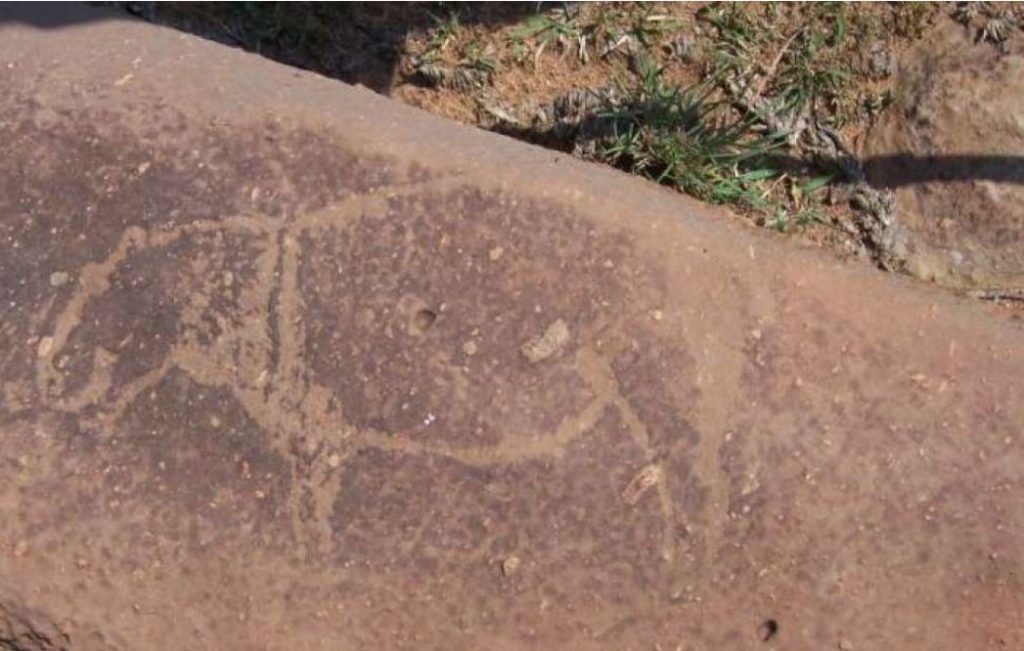Two billion years ago an enormous asteroid slammed into what is now South Africa. It left behind the largest and second oldest confirmed impact crater, the 300 kilometer-wide (190-mile) Vredefort Crater.
Now, eight thousand years ago, the Khoi-San people carved this image, apparently of a hippopotamous, on rock, not knowing the outcrop they were carving on was part of the world’s largest asteroid impact site.

The distinctive crater shape has eroded away over the course of almost half the Earth’s lifetime, but its legacy remains important.
Geologists studying the crater have found stone carvings showing it was a place of considerable spiritual significance to ancient peoples, as well as making possible the world’s richest gold mines.
The giant Vredefort crater
The Vredefort Crater is almost twice the size of the one at Chicxulub that ended the Cretaceous Era.
The asteroid that made it is thought to have been much larger as well – some 10 to 15 kilometers (6 to 9 miles) across. Despite the geological forces that have acted on it we can still make out features such as its central dome, parts of the crater rim and deformed rock that once lay below the crater floor. The site provides us with a rare opportunity to study a very large impact site without having to go to the Moon.

Geology
Geologists from South Africa’s University of the Free State are in the process of investigating it, and while much of their work is still to be done, they have already come up with some exciting findings outside their fields.
The floor of the crater is marked by granophyre dykes, feldspar and quartz rocks that can stretch for miles while being only a few meters wide. A paper concludes molten material produced in the impact sank into the ground and captured rock fragments on its descent that would otherwise have eroded away over the subsequent billions of years. To geologists, these are a rich source of information about ancient rock formations that would otherwise have been lost.

The amazing findings
Thousands of years ago what is now northern South Africa was inhabited by the Khoi-San people. While studying the dykes, Dr Matthew Huber and colleagues found carvings left on some of them by the Khoi-San. Although they would have been unaware of their remarkable origins, the Khoi-San apparently recognized how unusual the dykes are, and chose them as sites for their ceremonies.
Huber discovered the carvings were unknown to archaeologists and reported them. “What is amazing is that the same dykes that we recognize to have the most geological significance also had the most spiritual significance for these early inhabitants,” Huber said.
The ancient carvings
The carvings appear to represent creatures such as rhinoceroses, hippopotamuses, and horses then common to the area. Artifacts strewn around the carvings have been dated to 8,000 years ago. Archaeologists think their shapes reminded the Khoi-San of snakes, which were associated with rain in that culture.

And gold
The mobilization of minerals when so much rock melted after the impact led to the concentration of previously existing gold deposits into one spot, and brought them closer to the surface. This made possible the world’s richest gold deposits – from which more than a fifth of the world’s mined gold has come – and the establishment of Johannesburg.
Several craters even larger, and in one case older, than Vredefort have been identified, but in each case geologists continue to debate whether these really are impact craters, or if they were formed through other processes.











